Rodless actuator
The industry is still developing, but it is still necessary to introduce such modernizations, which will allow to rationalize the budget and optimize the labor costs themselves. At the same time, there is no need to incur high costs for this. Rodless cylinders are essential in many industries. They are characterized by exceptional functionality, work efficiency, and at the same time their price is relatively low. It's time to get to know their application and learn more about them.
Rodless cylinders - what should you know?
A rodless cylinder is a pneumatic element that has the ability to move a load along a linear path. it uses compressed air, but remember that the quality of the compressed air is very important. The ISO 8573-1 standard applies to the cleanliness class. Dirt can come from the atmosphere or from the compressor. Therefore, you should look for high-purity compressed air.
Thanks to this, the drives themselves will not be damaged, and thus the labor costs will not be increased. A rodless pneumatic cylinder therefore has a good stroke length in a smaller space. Interestingly, there is no need to buckle the piston under high loads. Of course, there is also no need for long jumps. The force and movement in both directions is the same.
It is also worth knowing about easy and quick assembly, which also affects the comfort of work. Wherever high dynamics of work is required, such rodless cylinders are used. They will prove themselves wherever work is carried out consisting in moving materials, lifting, loading and even cutting.
Rodless cylinders - a wide range of applications
Rodless cylinders are undoubtedly very advanced products in terms of technology. They will work even in heavy-duty work, as well as in difficult conditions. They are used in works where the most restrictive application is required. They can be used in works where working elements have to be moved at high speed. They are also used in machines for cutting plastics.
A rodless cylinder can move lightweight components over long distances. It is also important to know that such a rodless cylinder is suitable for carrying bulk loads. Thanks to the force of the piston, which is transmitted by a driver compressed with a mechanical piston, the work efficiency is really high. Well, in many works the capital of human strength is used, but it must be remembered that wherever work is supervised by a human or directly carries out the risk of accidents is higher, and it is difficult to obtain repeatable results.
This means that not always work standards can be met, and thus the entrepreneur managing the company exposes himself and his clients to potential losses. Hence, human capital can be largely replaced, and instead of using human force, it is better to use the force of compressed air that puts rodless cylinders in motion.
A rodless cylinder can therefore be used in various industrial departments. The rodless cylinder is used in the automotive industry, e.g. used in applications to move the car's chassis on the assembly line. They prevent downtime, but in a real way they increase its speed. One may even be tempted to say that their use in industry is almost unlimited.
Well, they are used in the food, machine and even furniture industries. You need to remember to choose a rodless cylinder compliant with ISO standards, because then it is easy to match them with mounting holes or regenerative parts.
Single-acting rodless cylinders - what is worth knowing?
The structure of the pneumatic actuator is quite distinctive. It includes a piston and a piston rod that move within a cylinder. In this cylinder, the piston makes the desired movement. In such pneumatic systems, compressed air stimulates the action, and more precisely, the extension and retraction of the piston. It is important to know that there is a single-acting actuator that has one port. This is where compressed air comes in. The use of such pneumatic actuators is very large. They are used wherever clamping, punching or positioning is required.
This means that the compressed air only flows in one direction and causes the device to move, forcing the piston to extend in one direction. The external force then returns the piston to its original position. This happens after air has been released through the same port.
Such a rodless cylinder has a number of advantages. First of all, their design is simple. Their price is also relatively low. They also excel in single port and valve cost reduction.
Double-acting rodless cylinders - why choose them?
Another commonly used pneumatic cylinder is a double-acting rodless cylinder. Double acting cylinders have two ports and both ports use in operation. Hence, their use is necessary when the machine requires more than one movement, and precisely in its case it is necessary to move the load in both directions. Double-acting cylinder can extend and retract if necessary.
It has two ports, and air enters and exits through both ports. Such actuators are characterized by above-average efficiency, as well as precision and accuracy of work. Therefore, one may be tempted to say that their use will significantly reduce labor costs, but also increase its safety. Another advantage of this type of pneumatic actuator is the fact that they use a medium such as clean compressed air.
Thanks to this, they do not emit pollutants. Thus, they have a positive effect on ecology. Such devices are used on a large scale wherever work requires precision, accuracy, but also needs to be done quickly. Hence, they are used in the broadly understood industry and robotics. They can perform tasks such as moving goods from conveyors, but also lifting them. For this, they are used when closing and opening the door.
It is also worth knowing that they provide much more control over the movement. This is because compressed air moves in both directions. For this reason, they are used in the medical industry, but also wherever earthmoving equipment is used.
Thanks to such pneumatic actuators , you can speed up the work, also the efficiency will be higher. But the use of a double-acting actuator does not end there, as it is also used in space programs. Its biggest advantage is the fact that you have control over its movement at every stage of the work.
It is powerful and fast, so it sets certain machines in motion quickly and efficiently, and consumes little energy. In addition, it comes in many variants of stroke sizes, but also holes.
A double-sided rodless cylinder is more expensive than a one-sided cylinder. They also require larger buildings, but their purchase is still very profitable.
How to choose a rodless cylinder - single-acting or double-acting?
The choice of a rodless cylinder should strictly depend on the type of work, but also on the needs. If you run a large company, you need to look for more effective solutions. Single-acting pneumatic cylinders can be used wherever a force transmitting loads in one direction is required, so it can be said that they have a special application in industry, e.g. they can throw objects from conveyor belts.
However, taking into account the speed of work and efficiency, the double-acting cylinder model is the better choice. It can be used wherever speed and great strength are needed. You still need to pay attention to the costs themselves. Single-acting pneumatic cylinders are cheaper, on the other hand, they will require more frequent replacement.
Over time, their work may not be accurate. Double-sided cylinders are more technologically advanced. They are more effective and faster, as well as easier to maintain a proper technical condition. Of course, each of them requires cleaning and the use of the highest quality medium. When choosing, you must also pay attention to ISO standards.
The choice matters - which rodless cylinders to choose?
An excellent choice is the CM series rodless cylinder, which complies with the ISO 6432 standard. They are available in single-acting as well as double-acting versions. You can choose models with or without shock absorption. It is worth choosing cylinders with a piston rod made of stainless steel. As a result, they are extremely durable and resistant to mechanical damage, but also do not corrode. So they can be used to work in difficult terrain.
We recommend a rodless cylinder with a die-cast aluminum housing and polyurethane seals. The CH series that meets the ISO 15552 standard is definitely the right choice.
In the case of compact pneumatic cylinders , we recommend models with external or internal threads, and even in an anti-rotation version. A good example is the actuators of the CD series, which meet the ISO 21287 standard. Where the highest quality and other mounting holes are required, the CU series actuators are used.
Rodless cylinder - which seals to choose?
It is also worth paying attention to the seals themselves. The perfect choice are those made of polyurethane, which will work even in difficult conditions. Such seals withstand temperatures as low as minus 20 to 80 degrees Celsius. Fluorine rubber seals can also be selected. They are resistant to both oils and fuels. The rodless cylinder works well even at temperatures up to 150 degrees Celsius.
Where food and pharmaceutical products are produced, it is essential to use FDA-certified polyurethane seals. The operating temperature of such seals is from minus 20 to 80 degrees Celsius. You can also opt for an NBR seal, which is equipped with a TP-E insert. They are used in harsh conditions with high levels of dust.
This insert collects and carries away dirt that may be deposited on the piston rod. It is also worth knowing that such seals can withstand temperatures from minus 20 to 80 degrees Celsius.
As you can see, the choice of rodless cylinders is really huge. Thanks to this, you can easily match them to the type of work and thus increase its effectiveness while reducing the use of human capital. It is worth choosing products that comply with ISO standards, which guarantee that in the event of the cylinder's wear, you can easily find a new matching model.
Rodless actuator - construction
The new generation of OSP-P actuators is based on the well-known ORIGA rodless actuator and developed into one modular package of linear actuators, guides and controls, offering engineers complete flexibility.
Mounting rails on 3 sides of the actuator enable modular assembly of elements such as linear guides, brakes, valves, magnetic sensors directly on the actuator itself. This solves many assembly problems, especially where space is limited.
The modular system concept is the ideal basis for additional customer-specific functions.
- Profile: Anodized aluminum
- Carriage (piston): Anodized aluminum
- Covers: Lacquered aluminum
- Sealing tape: Stainless steel
- Seals: NBR (optional: Viton)
- Dust covers: composite

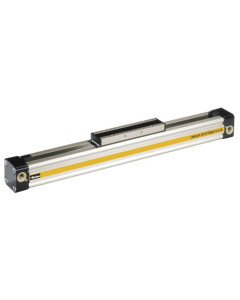
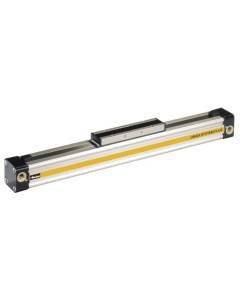
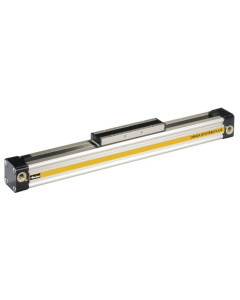
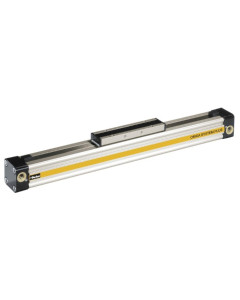
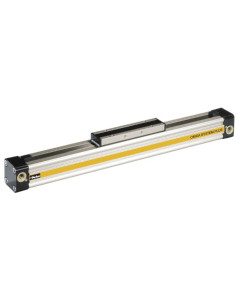
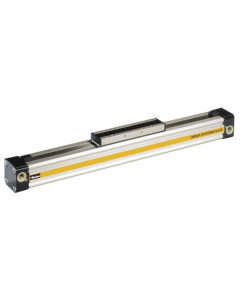
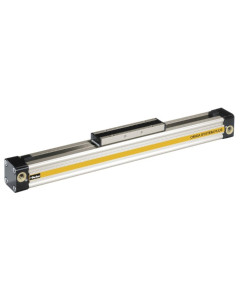
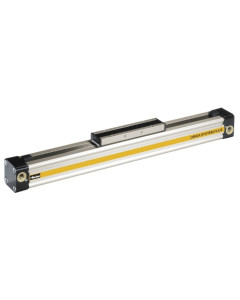
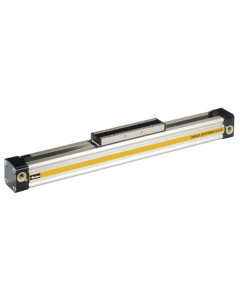
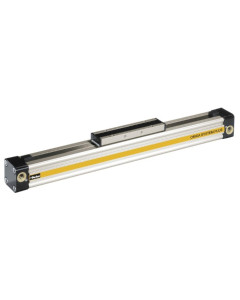
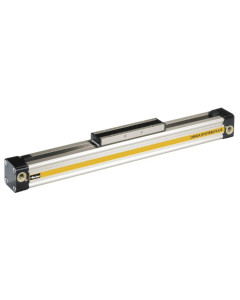


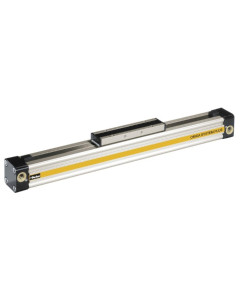
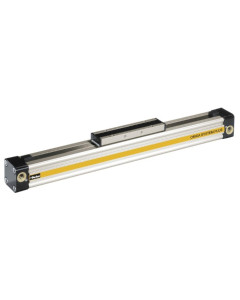
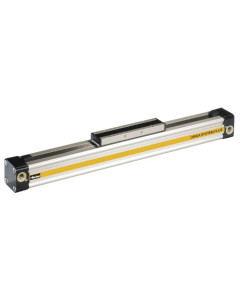
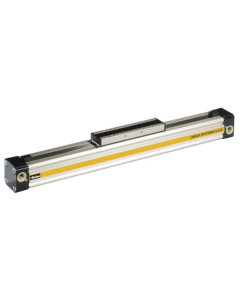

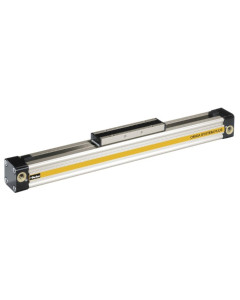
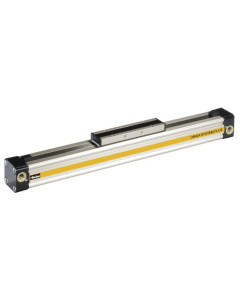
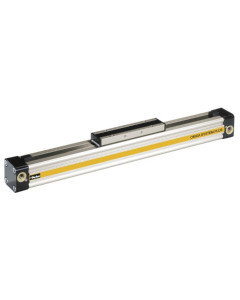
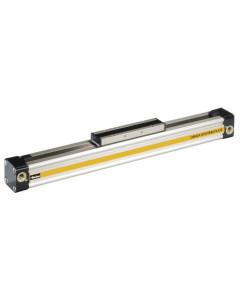
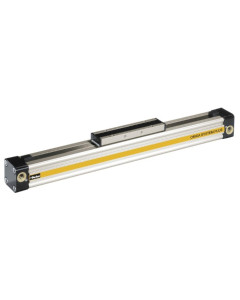
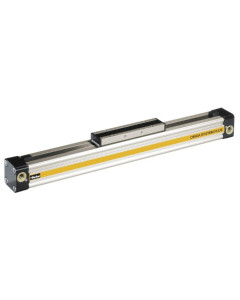
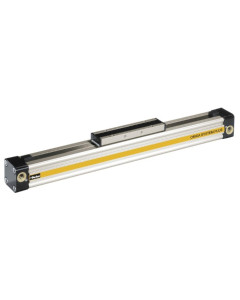
Login and Registration Form